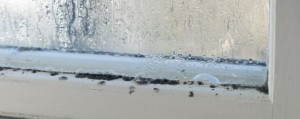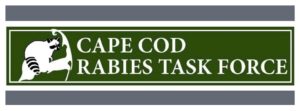 HYANNIS – There’s mold. And then there’s Cape Cod mold.
HYANNIS – There’s mold. And then there’s Cape Cod mold.
Mold is a danger anywhere, causing acute and chronic health problems ranging from allergies and headaches to asthma, rhinitis and even pneumonia.
But there are many specific molds on Cape Cod that you won’t find farther inland, explains J. Nicholas Vandemoer, MD, an ear, nose and throat allergy specialist with Cape Cod Healthcare.
He screens patients for allergies they might suffer from inhaling air on the Cape. Twenty-two of those are specific to our area, with its damp, cool conditions, and prevailing southwest winds that bring mold up from the eastern seaboard.
“If you go to allergists in Worcester, for example, they may not know of these molds or test for them, because they don’t encounter these molds there,” Dr. Vandemoer said.
Here are six of molds common to Cape Cod:
- Alternaria Tenuis, which is often associated with asthma and damp locations.
- Epicoccum Purpur, frequently found in the soil and on leaves, especially in cool, moist weather.
- Hormodendrum, which is prevalent indoors and outdoors including decaying vegetation, and can cause asthma as well as allergies.
- This is often found in damp conditions and is attracted to leather like shoes left in the closet and upholstery. Appears to have a light greenish or blue coating.
- Helminthosporium, which is found on leaves, among other locations.
- Fusarium is attracted to damp areas and can cause infections in the eye, skin and nails.
These and the other Cape Cod molds will most often trigger headaches, sneezing and congestion. For many sufferers, they might cause a loss of concentration, almost a feeling of being in a fog, said Dr. Vandemoer.
“It’s as though you can’t think your way out of a paper bag,” he explained. “It’s like a lethargy.”
One of his patients, an attorney, suffered from such symptoms for years before he came seeking help, Dr. Vandemoer said. “After testing for mold and being treated successfully, he declared: ‘I wish I knew earlier what was wrong. I would have done much better in law school.’”
When it comes to outdoor mold, you can hire someone else to rake those leaves. But it’s really indoors where you can have a fighting chance against these allergens, he said.
Dr. Vandemoer typically begins his examinations by asking his patients these questions:
- Are there any musty smells, especially in the basement?
- Is there any visible mold growing in bathrooms, windowsills, books, shoes or walls?
- Are there water stains on the ceiling or walls?
- Is there peeling paint, which often occurs after intense condensation?
- Are the wood floors warping?
If so, it’s past time to begin reducing the risk.
You can open your windows to improve ventilation and abate indoor dampness. But the outdoor air may be more humid than what’s inside, and may be carrying some of the mold from trees and leaves.
That makes it doubly important to control your indoor environment as much as possible, said Dr. Vandemoer. Here are 15 ways to go on the offensive against indoor mold:
- Keep indoor humidity at about 45 percent, which is below the threshold where most molds are known to flourish. Monitor moisture levels with a hygrometer.
- Correct all roof, gutter and plumbing leaks and fix any drainage problems.
- Clean your humidifier, air conditioner and dehumidifier, following the manufacturer’s instructions.
- Use a low-temperature dehumidifier in your basement, which is a notorious breeding grounds for mold.
- Avoid using carpeting in your basement.
- Use an exhaust fan or dehumidifier in a crawl space or basement during warm weather.
- Install exhaust fans in the bathroom and kitchen and keep them running for 10 to 15 minutes after bathing or cooking.
- Use a HEPA vacuum or steam cleaner to keep a clean house. HEPA stands for “High Efficiency Particulate Air” or “High Efficiency Particulate Arrestance.”
- Try to live without houseplants, which often have molds in the potting soil.
- Replace insulation materials that have become wet.
- When cooking, cover your pots to maintain low humidity in the house.
- Keep your home warm in the winter.
- Buy mold-resistant shower curtains and clean the runners of shower doors.
- Use tile in the bathroom, never carpet.
- Use high-efficient, disposable vacuum bags if you do not have a central vacuum system in your home.
























Speak Your Mind